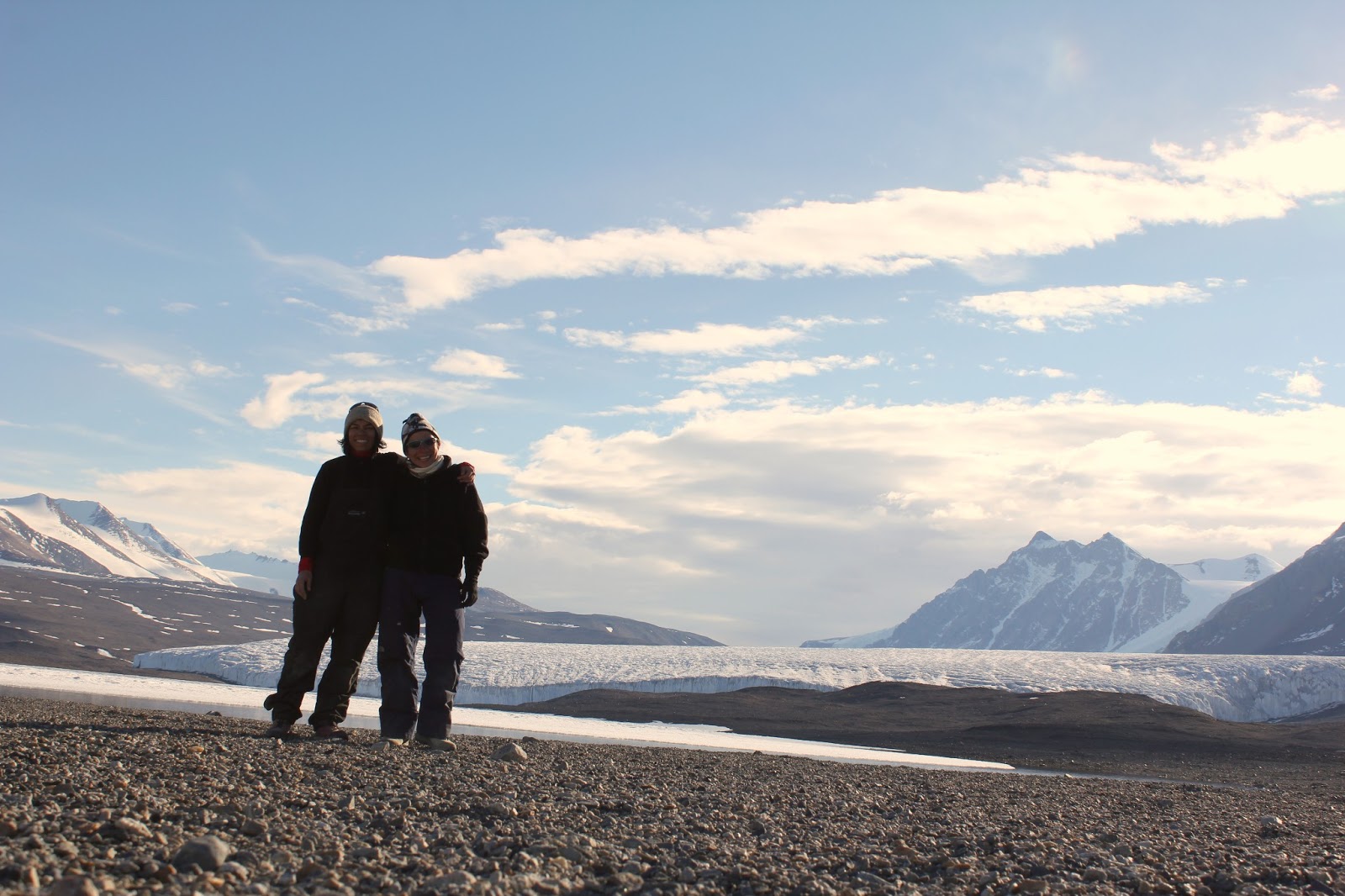So a quick update and a bit of yarn spinning about snow school.
We are still in McMurdo and not in the field because we are waiting on some equipment to get in on planes. If the trip from Canada to the Antarctic was indicative of nothing else, its that the weather is nothing trivial to deal with, and that is the primary reason the equipment wasn't here before our arrival.
*fingers crossed* we should see it today.
Either way, half the team is going out to University Valley tomorrow (the main study site, the coldest and driest), while some of us will stay behind to test the prototype Mars permafrost drill, and some of us will sample from some "warmer and wetter" (relatively) sites. Later we will all move to University Valley. This is again of course, all up to the weather gods.
HAPPY CAMPER SCHOOL
Before you are allowed to go out into the field here, you have to take a short, two day intensive, survival training course. There are some serious aspects to it, hypothermia and frostbite are no joke, and we spent a while looking at photos of frostbite and hearing tales of lost limbs from careless mistakes. Once we went over the protocols for various operations and scenarios here at McMurdo, we drove out onto the McMurdo iceshelf on a
Delta, where we would be spending the "night" (24 hour sunlight!) on our own (the instructors wouldn't be far away).
We learned how to use all the gear in the survival kits (these come complete with dehydrated food to last 2 people 3 days, 2 sleeping bags, a mountain tent, stakes, an ice saw, and a small foldable shovel). We learned how to use
HF radios to call for help, including all the lingo. These radios are pretty neat (Ham radio is a hobby of Brian Glass on our team), and you can talk (or listen) to someone with a HF radio just about anywhere in the world. They work by bouncing signals from the earth, against the
ionosphere, and then back down, and then back up, and then back down etc etc around the sphere of our little pale blue dot.
We learned how to make a few different types of shelters from the cold: a mountain tent, a Scott tent (essentially the exact same design that
Robert Falcon Scotts team used during their
expeditions 100 years ago in the Antarctic), and, a
snow trench (NOT the same as
quincy to my Canadian winter camping friends). Even though I decided to dig my own grave (I mean trench) to sleep in that night, the camp had to be set up first.
Scott tent
snow wall
our kitchen, the heart of the home
snow grave
The Scott tents are pretty great and can stand up to heavy winds on their own, but the mountain tents needed a bit more protection from winds coming from the south. We built a protective snow wall by sawing out cubes of snow and setting up the tents on the lee side of the wall. Similarly, we built a wall around a trench we had dug, and set up a pretty decent kitchen with camp stoves (like every house party, this where most of the happy campers getting trained hung out and talked during the night). Dinner that night...was dehydrated food, the taste tempered out with plentiful hot chocolate, made from water melted from snow near by.
Bolek Mellerowicz making fresh steps under the gaze of Mount Erebus
Me making my snow trench, while Brian Glass and another PI gaze on, I could make a joke about the PIs standing around giving advice while the grad students are digging themselves deeper into their own holes.....
The snow trench was not too hard to make, though I was up until midnight digging it out. Pretty much you just dig a narrow pit a bit bigger than the length of your body (mine was about 5 ft deep, and 7 ft wide), widen the bottom out so you can wiggle about in it, throw a sleeping bag in, and cover up the top with some ice blocks. Its actually pretty warm in there once you get a body in it, but I didnt make mine wide enough and every time I tried to sit up or try and find something close to my feet a rain of snow from the walls would fall on me and I would get wet (wet and cold= not a good survival technique). Would have been fine all night, if it wasn't for the fact that I had been sleeping ON my pee bottle rather than having it within arms reach, so getting up in the middle of the night just got me a snow shower. I had to get out of the grave to dry off in the polar desert air, and found I had the entire camp to myself while everyone slept. Serenity, majestic
Mount Erebus smoking at the top, and not a sound except the wind against our flags. Pretty great as far as training goes!










.jpg)


















